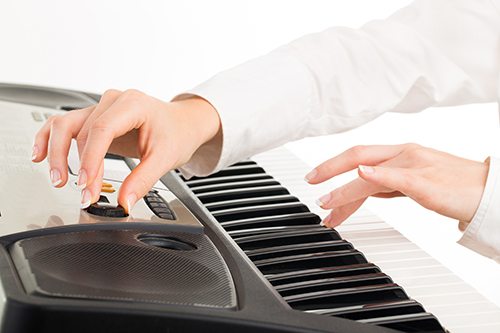The cleaning maintenance of your piano is important to keep the health, quality and even the sound of the instrument in perfect shape. Serious damage can occur to your piano maintenance is not being taken care of thoroughly by you. A poorly cleaned or rarely cleaned piano can make something else potentially go wrong with the instrument, so it’s vital to keep up regular cleaning maintenance of your piano. The piano strings or the other small, complex parts of the piano could be damaged if the piano is not kept clean.
The piano is not only an instrument, but often it is a piece of fine furniture within a home. The piano body is made of wood that has piano finish made of lacquer or polyester. In fact, piano finish is a term used to also describe other furniture that has the same high grade of finish as a piano does.
The most basic method of caring for the piano’s finish is to avoid setting any cups on the surface, as this will warp the finish. Also avoid setting the piano in direct sunlight or in a room of excessive temperature highs and lows. You can get a space heater or an air conditioner for your piano room to keep the room at a comfortable, constant temperature. If your piano is kept in a fairly constant temperature clime, the body will not warp and change shape. Pianos can sometimes benefit from a humidifier kept by them in drier climates. However a piano does not care for too much damp, so a humidifier should only be used lightly by a piano if your piano room is too dry.
Dust is not the friend of your piano. If you dust too vigorously, this can lead to scratches on the surface. The best piano supplies option for dusting is to use a feather duster or a soft, damp cotton cloth. A heavy cloth used as a duster could potentially cause scratches on the surface. If you use a damp cotton cloth to pick up dust, you must dry off the piano immediately after with a dry, soft cotton cloth. Dust in strokes down the piano’s body. Dusting in circular motions can make obvious circles on the piano.
Other piano supplies you need for your piano maintenance are either Murphy’s Oil or some soap to remove fingerprints and smudges. Lightly using these products can help to free the piano of any smudges. First of all you will have to dust before you move on to cleaning smudges. Too apply the Murphy’s Oil or a little soap to your piano, use a damp cotton cloth. Gently wipe away any smudges with the product covered cloth. After that wipe with another damp cotton cloth without product. Last of all dry it off with a dry cotton cloth.
Piano polish is not always a necessary piano supplies need. Generally piano manufacturers believe that piano polish can make the piano’s surface weaken if over used, so only using a small amount of polish is really needed if that what you choose to do. Do not use any old furniture polish. Ask at your local piano store what kind of piano polish recommendations they have. Do not polish without dusting first. Always dust before polishing, so that dust will not scratch your piano. Apply the polish with a cotton cloth very sparingly. Wipe away any excessive amount of polish, as polish build up can damage your piano over time. If your piano has a build up of polish on it, you will have to clean it off with a mild soap and a damp cotton cloth. In case of that not getting the polish off, you will have to get a wood cleaner or a wax remover from a hardware or wood works supplies store.
It’s easy for piano keys to become dirty from fingers and dust. You can use a soft cotton cloth and a gentle soap to clean your piano’s keys. Dampen the cotton cloth slightly, but not too much because you will not want moisture descending between your keys. Place a small amount of soap in the cloth. Wipe keys from the top of the key to the bottom of the key. Do not wipe from side to side, as this can cause dirt, dust and moisture to collect between the keys. After wiping, always use a dry cotton cloth to dry the keys off. Again wipe from the top of the keys to the bottom of the keys, rather than wiping side to side.







